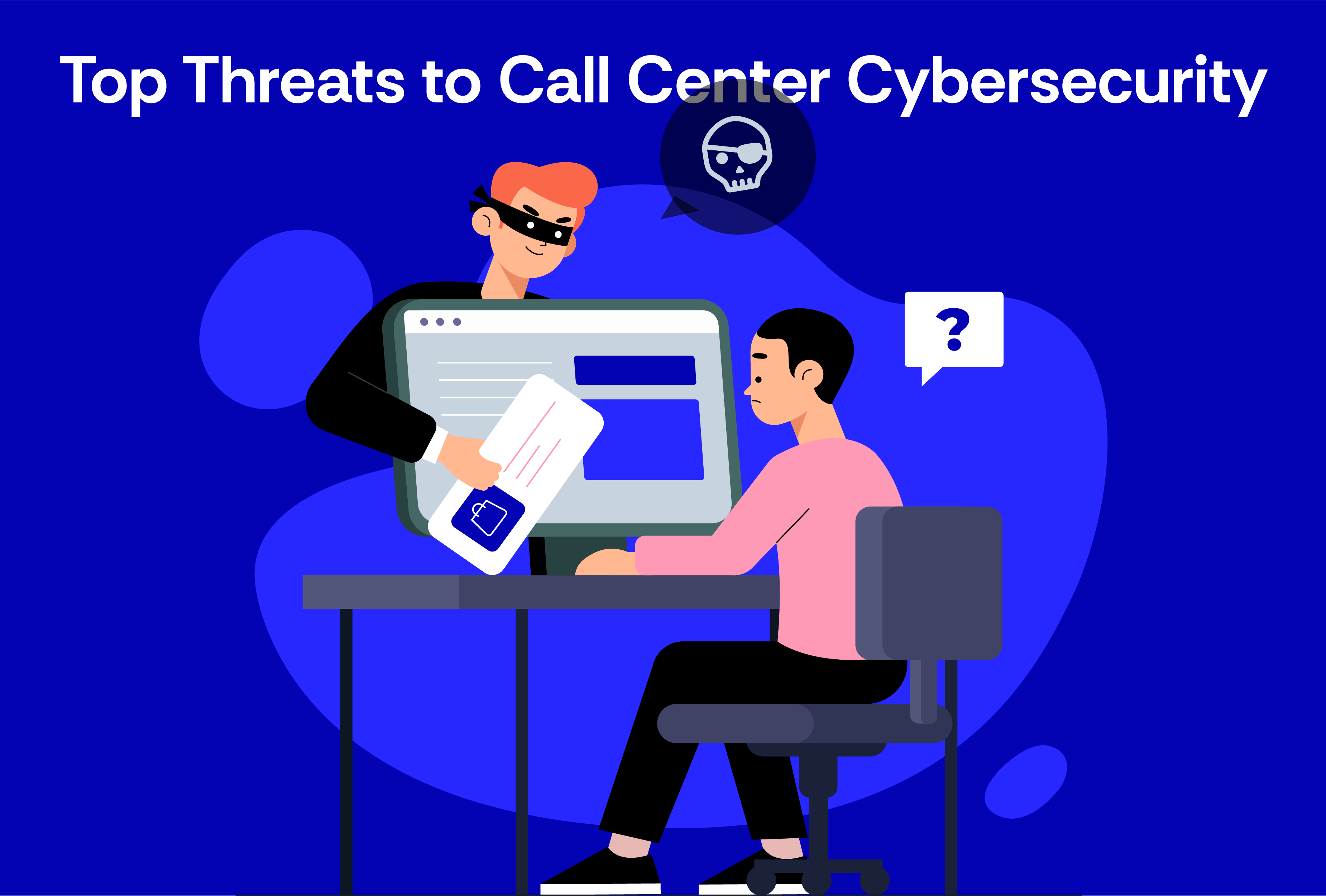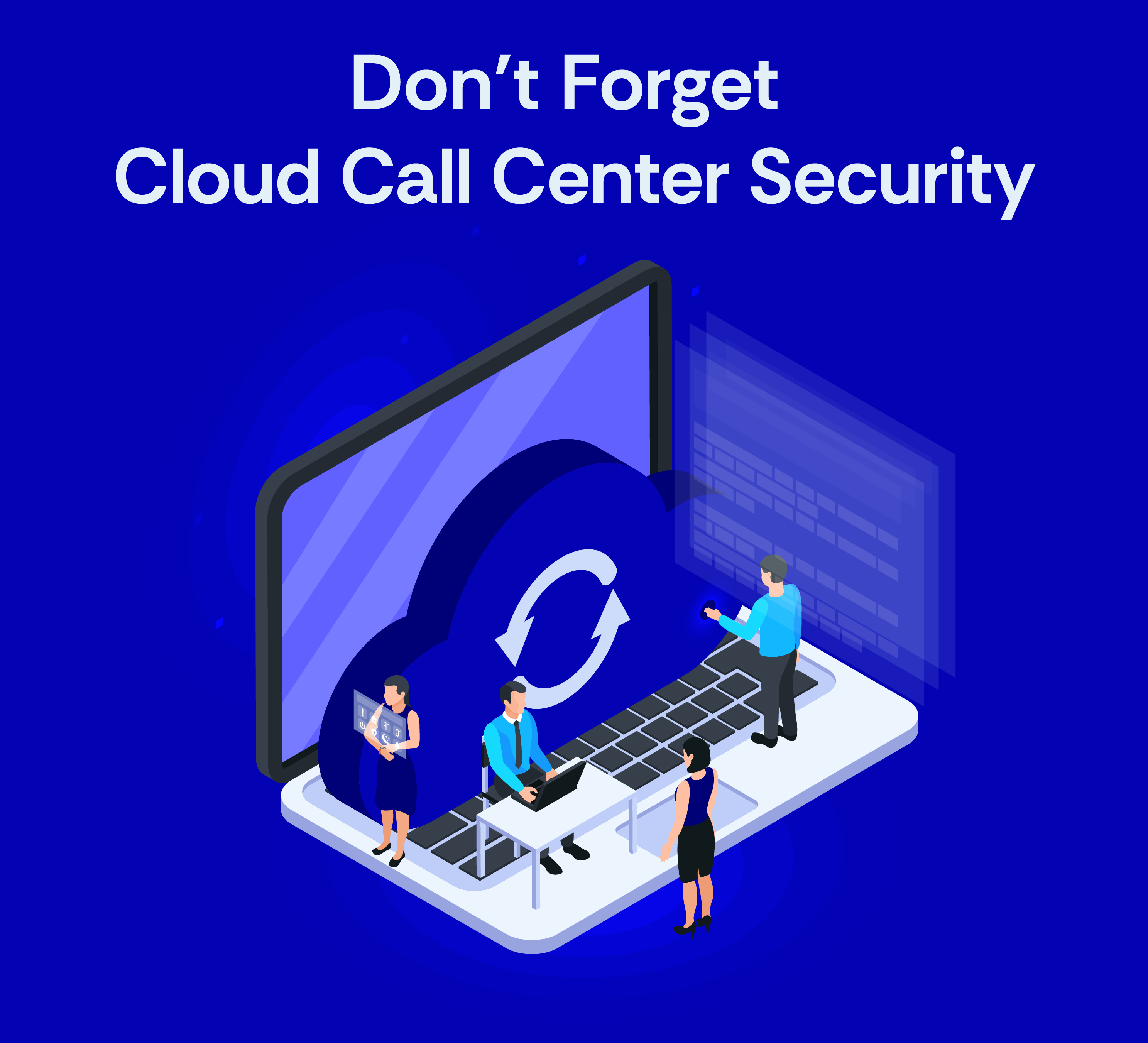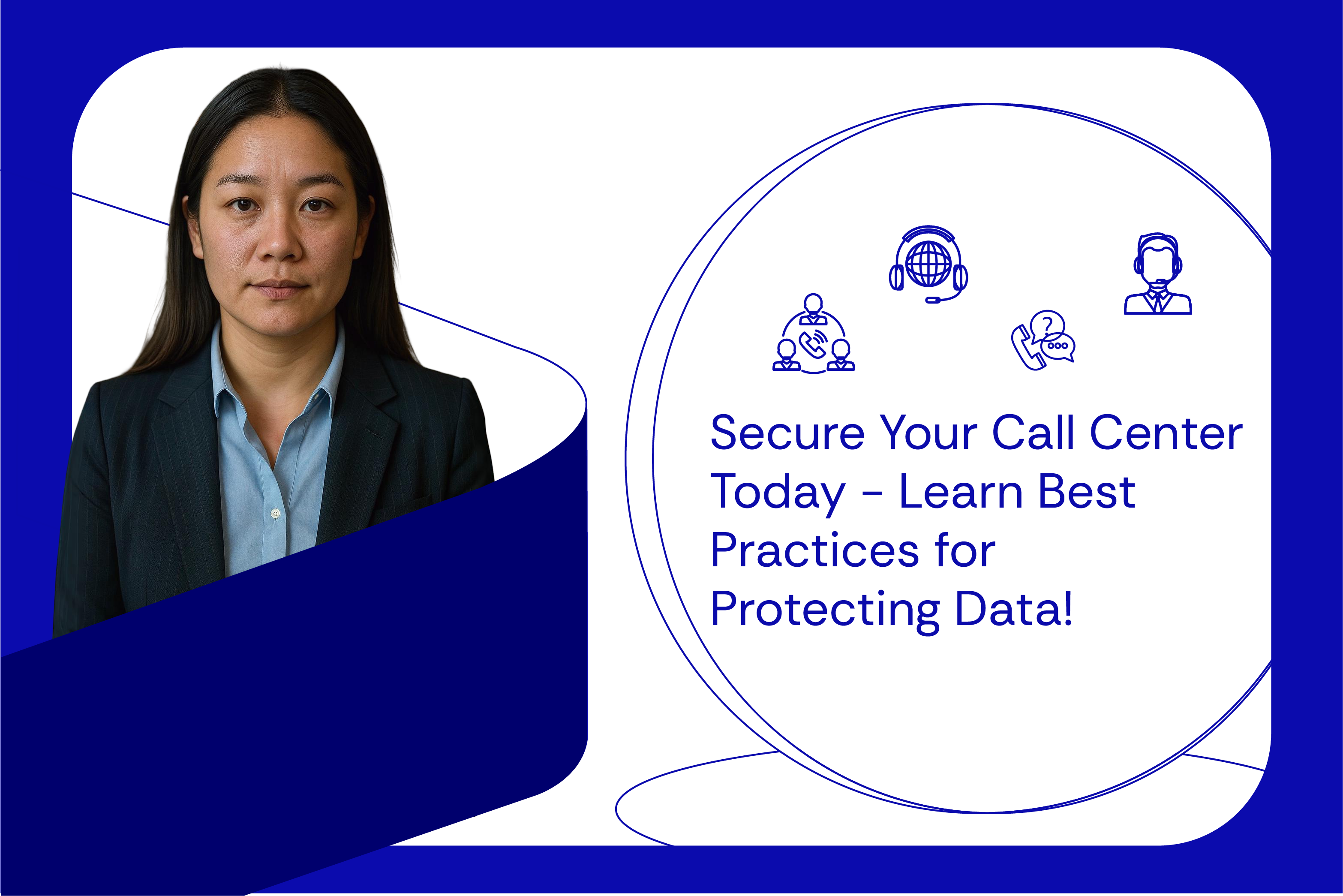Key Takeaways
- Call center security best practices are critical for protecting customer data, maintaining compliance and safeguarding customer trust, for growing D2C and consumer brands operating across the US, UK & Australia.
- Threats such as phishing, insider fraud and weak authentication can be reduced through strong call center security policies, agent training and authentication protocols.
- Cloud-based contact centers require encrypted communications, endpoint protection and multi-factor authentication to prevent breaches.
- For CX leaders, secure call center operations are a competitive advantage which empower teams to deliver seamless and trustworthy customer experiences.
Why Does Call Center Security Matter?

Your outsourced contact centre services handles a lot of sensitive information. Every day, your agents are pulling up customer records, typing in payment details, verifying accounts, managing subscriptions, and sometimes even dealing with health, legal, or financial data. Customers expect absolute protection, and for VPs, Directors and CX leaders in D2C or consumer brands, maintaining that trust is critical.
For VPs, Directors, senior executives and directors overseeing customer experience and support in fast-growing D2C brands across the brands.
But here’s the reality check: that trust lasts only as long as your security does.
If a hacker breaches your systems or a scammer manipulates an agent, your brand faces lost trust, compliance violations and potential legal exposure. That’s in addition to the financial impact of a data breach, an average breach costs $4.88 million according to the 2024 Cost of a Data Breach Report by IBM.
Today’s cyber-criminals don’t just target your software. They target people and not just systems because people are often the weakest link. That means security needs to go beyond just firewalls and antivirus software. You need to build a culture of awareness, put strong systems in place, and make sure every person on your team knows exactly what to do, and what to avoid, when it comes to handling customer data, it’s about culture, compliance and vigilance.
(See how Atidiv helped a global aggregator enhance data accuracy and compliance—Enabling $20M+ Savings and 95%+ Quality for a Leading Business Aggregator).
Let’s dive right in to how you can secure your call center today!
Top Threats to Call Center Cybersecurity

A 2019 study found that 51% of cyberattacks used call centers as an entry point for fraudulent account takeovers. Modern cyber threats often come from clever manipulation, human error, or weak spots in your setup that nobody’s paying attention to…until it’s too late. Let’s break down the biggest threats that could be lurking inside (or outside) your call center:
- Social engineering and phishing attacks: Hackers don’t always try to break into your systems. Sometimes, they just pick up the phone and pretend to be someone they’re not. Phishing emails are part of this, too. A fake password reset email or a sketchy link can trick even the savviest employee into clicking something they shouldn’t. Adopting call center authentication best practices such as OTPs or callback verifications will help prevent breaches.
- Insider threats: Not all threats come from the outside. Sometimes, the risk is already sitting at a desk inside your organization. It could be a disgruntled employee with access to sensitive data, or someone cutting corners because they’re tired or overwhelmed. Even well-meaning agents can cause serious issues just by accidentally mishandling information. Role-based access control (RBAC) helps reduce exposure.
- Unsecured remote access: Laptops with no encryption. Home Wi-Fi with weak passwords. No VPN. No device management. These are all common issues that make remote and cloud call center security extra vulnerable. In particular, for consumer brands operating across distributed teams or a third-party customer support network. VPN use and device encryption are must-haves.
- Outdated or weak software: Old software often lacks the patches and updates needed to guard against new threats. And hackers? They love known vulnerabilities.
- Lack of proper authentication: This one’s pretty much the low-hanging fruit for cyber-criminals. If your team is using weak passwords, or if you don’t have multi-factor authentication (MFA) enabled, you’re basically inviting trouble in. Fraud attempts can drastically increase due to lack of poor call center verification best practices.
Call Center Security Best Practices You Should Be Using Right Now

When you bake smart habits into your daily workflows, protecting sensitive data becomes second nature. Let’s talk about what you can do to protect your call center starting today.
- Implement strong identity verification protocols: Before you share any sensitive information, make sure you know exactly who you’re talking to. This is your first—and sometimes only—line of defense against social engineering attacks. Use:
- Security questions only the real customer would know
- One-time passcodes (OTPs) sent to verified devices
- Voice or biometric authentication tools
- Callback procedures for high-risk requests
- Use role-based access controls: Not everyone needs access to everything. Role-based access control (RBAC) solves this by giving each team member access only to what they need. This doesn’t just boost security—it simplifies onboarding and reduces mistakes.
- Encrypt everything: Whether it’s data at rest (stored on your servers) or data in transit (being sent via email or chat), encryption keeps it safe. Even if someone does intercept it, they won’t be able to read or use it. Encrypt things for stored and transmitted data such as call recordings, chat logs, email attachments, customer data, file transfers and payment info.
- Keep your systems and software updated: Cybercriminals actively scan for known vulnerabilities in outdated software. Here’s an action plan to stop them:
- Enable automatic updates wherever possible
- Assign someone on your team to manage patching
- Regularly check vendor sites for security bullet
- Replace software that’s no longer supported or updated
- Train your team: Security is a people thing as much as it is a tech thing. Research has shown that 88% of cybersecurity breaches are caused by human error. So, remember to schedule regular training sessions to cover things like spotting phishing emails and scam calls, data handling best practices and how to report potential breaches.
- Monitor and audit everything: Sometimes, you don’t catch things until after the fact. That’s why your systems should log Real-time monitoring:
- Who accessed which systems
- When they accessed them
- What changes were made
- Any unusual activity (failed logins, unauthorized access, etc.)
What Makes a Strong Call Center Security Policy?

A strong call center security policy is more than just rules on a page. It should be clear, actionable, and part of your everyday operations, not something you only pull out when something goes wrong. Here’s what a rock-solid security policy actually looks like:
- Clear rules on data handling and sharing: Your team needs to know exactly:
- What types of data are sensitive
- What’s okay to share (and with whom)
- How to securely store, transmit, and delete customer info
- What not to do—like writing down passwords or emailing credit card numbers
- Acceptable use of software, systems, and devices: Your policy should spell out:
- What software and systems are approved for work
- What’s strictly off-limits
- Device usage rules, especially when working remotely
- Guidelines around screen sharing, recording, and storing data locally
- Steps for reporting suspicious activity or breaches: What happens when something feels off? Your team should never hesitate to speak up if:
- A customer asks for something sketchy
- An email looks “phishy”
- A system suddenly acts strange
- They accidentally click the wrong link
- Password and authentication requirements: Set clear expectations for password complexity, how often passwords should be changed, when and how to use multi-factor authentication and why sharing logins is a no-go.
- Remote work guidelines: Working remotely is the norm now. So your policy has to account for it. You need clear rules like:
- What security software must be installed
- VPN requirements
- Rules around Wi-Fi usage
- Who to call if a device is lost, stolen, or compromised
- Training schedules and compliance check-ins: You need to build in ongoing training, refreshers when policies change or new threats emerge and periodic compliance reviews to make sure everyone’s still on track
(For a guide on modern helpdesk and CX alignment, read Enhance Omnichannel Helpdesk Strategies).
Don’t Forget Cloud Call Center Security

Cloud-based systems are flexible, scalable, and way more cost-effective than on-site setups. They let your team work from anywhere, onboard faster, and scale up or down without a massive tech headache. However, cloud environments come with their own set of risks. Let’s talk about how to keep your cloud-based setup airtight.
- Secure your endpoints: You need to ensure that the devices your people are using to log in are secure. You must:
- Require device encryption and strong passwords
- Use endpoint detection and response (EDR) software
- Enable automatic updates
- Set up remote wipe capabilities in case a device is lost or stolen
- Use trusted cloud vendors (and check their receipts): Look for vendors that have:
- SOC 2, ISO 27001, or HIPAA compliance
- Data center security certifications
- Transparent security documentation
- A proven track record with uptime and threat mitigation
- Understand the shared responsibility model: Just because you’re using the cloud doesn’t mean your cloud provider handles all the security. Usually, they secure the infrastructure (servers, physical data centers, etc.) while you’re responsible for data access, permissions and configurations. That means it’s still up to you to set strong permissions, monitor usage, educate your team and patch up any security gaps in your tools or processes.
(To see how advanced tech stacks improve resilience, explore Emerging Contact Center Technologies and Trends).
Lock Down Your Call Center Security and Stay Ahead
Call center security isn’t a “set it and forget it” thing. It’s not a checklist you knock out once a year and then move on. It’s more like brushing your teeth or exercising—a continuous discipline.
Hackers are getting smarter. Scammers are getting sneakier. And with new tools, platforms, and ways of working, your call center’s risk profile shifts constantly.
That means your approach to call center security has to evolve too. But here’s the upside of tight security:
- Your agents feel more confident handling sensitive info
- Your customers trust you with their data—and their business
- Your operations run smoother, with fewer disruptions or panic moments
- You spend less time reacting to problems and more time growing your business
Need a hand with it all? Atidiv’s customer experience specialists help growing businesses like yours build secure, scalable call center systems.
We assist growing consumer brands in the US, UK & Australia with:
- Auditing your current setup
- Cloud contact center compliance
- Training your team on best practices
- Or choosing the right software to protect your operations
(Read how we helped an NYC-based startup achieve 99% accuracy and 50% cost reduction — How Atidiv Delivered 80% Time Savings for an NYC Start-Up).
We’ve got your back. Partner with Atidiv to scale smarter.
Partner with Atidiv to scale smarter and secure your customer trust.
FAQs on Secure Your Call Center Today
1. Why is call center security so important today?
Because your agents handle sensitive customer info every day—from payment details to personal data. If that info isn’t protected, your company is exposed to fraud, lawsuits, and serious trust issues.
2. What are the biggest threats to call center security?
Phishing scams, social engineering, insider misuse, outdated software, and unsecured remote access are some of the most common vulnerabilities.
3. What should be included in a call center security policy?
Clear rules for data handling, access control, password requirements, device usage, training schedules, and breach reporting procedures—all tailored to your specific setup.
4. How can we secure a cloud-based call center?
Use trusted providers, enforce encryption, limit access with role-based permissions, and always use multi-factor authentication. Plus, keep a close eye on endpoint security.
5. What tools help improve call center cybersecurity?
Look for security software with real-time monitoring, access logs, call encryption and CRM integrations.
6. How should businesses prepare for call centre compliance in 2025?
Businesses must adapt to the updated protocols and security policies that align with the 2025 data privacy regulations. This includes encrypted communications and role-based access controls to meet evolving privacy laws.

